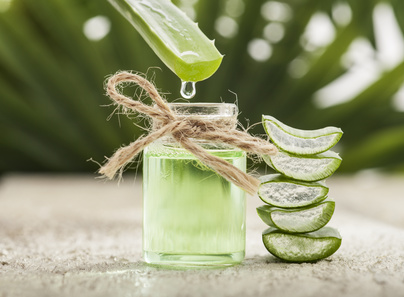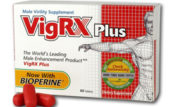By Steven Hutchings
 Michael Bloomberg may be determined to implement a soda tax to ease the burden of obesity in the Big Apple, but he’s got a heck of a fight ahead of him. A recent online poll of 2,100 adults found that between 56% and 58% of Americans opposed the tax, with two-thirds of them citing the role of government should not be to influence the beverages they consume.
Michael Bloomberg may be determined to implement a soda tax to ease the burden of obesity in the Big Apple, but he’s got a heck of a fight ahead of him. A recent online poll of 2,100 adults found that between 56% and 58% of Americans opposed the tax, with two-thirds of them citing the role of government should not be to influence the beverages they consume.
So why a soda tax? The evidence is all around you; a 2009 review by Harvard University refers to the period starting in the 1980s to 2009 as “The Fattening of America”, during which waistlines got bigger and ballooned to an imposing 66% of the population being either overweight or obese.
The health affects of soda go beyond your waistline. A dearth of recent studies, from publication that sugary soft drinks increase risk of kidney stones to a discovery that soda may damage teeth in a pattern similar to cystal meth and a recent finding that soda increases risk of osteoarthritis of the knee, add further fuel to a public debate that intensifies each month.
What does this mean to you? Well, it means that it can’t hurt to ease up on your soda consumption. You might also like to explore natural alternatives to soda, for your heart, your figure, and that other thing called your health.
How Much Soda Can I Drink?
At present, the American Heart Association suggests that a healthy adult limit intake of sugary drinks to no more 450 calories per week. That’s about the equivalent of three cans of soda.
Also bear in mind there are ten teaspoons of sugar in a can of cola. That’s a major jolt to your metabolism (with some ‘Jolts‘ being even higher – pun intended) if you’re hypoglycemic.
The American Heart Association suggests that a healthy adult limit intake of sugary drinks to no more 450 calories per week. That’s about the equivalent of three cans of soda.
Diet soft drinks dont escape the wrath either; a recent abstract written by a researcher at the University of Miami suggests that regular drinkers of diet soda are at a 48% higher risk of heart attack and stroke. And while the American Beverage Association disputes the findings, the gathering storm doesn’t paint a pretty picture for soft drinks, whether Coca-Cola or diet offerings.
So to answer a common question: how much soda is OK? Your best best is to drink no more than three cans a week. Diet soda drinkers might nudge that up to four, but remember that the lesser of two evils isn’t a huge leap forward.
Four Surprising Reasons to Give Up Soda
While the odd soda probably won’t kill you, you’re much better off if you can give up the stuff cold turkey. That may be a tough sell in a country that gets about 7% of its calories from soft drinks, according to the Center For Science in the Public Interest – which favors taxing soda – but if you’ve got the intestinal fortitude, try it. Here’s why:
Soda May Cause Pancreatic Cancer – A new study suggests that drinking just two cans of soda weekly may increase risk of pancreatic cancer – a rare but deadly form of cancer with a cold 5% survival rate beyond five years. The possible culprit? Boat loads of sugar, believed to increase insulin levels, which in turn lead to growth of pancreatic cancer cells.
Diet Soda is Linked to Kidney Decline – Those artificial sweeteners in diet soft drinks, like aspartame, pack a mean blow to the kidneys. One study found that women who drank two diet pops a day were twice as likely to have excess levels of a protein called albumin in their urine. Not good, because that’s a precursor to early kidney disease.
Soda May Increase Risk of Miscarriage – In a 2008 study, women who consumed 200 mg of caffeine daily during pregnancy were more likely to suffer a miscarriage. The source of the caffeine didn’t matter either, be it from soda, coffee, chocolate or even hot chocolate. There are 200 mg of caffeine in five sodas or two cups of coffee.
Soda Increases Risk of Gout in Men – Soda’s no friend to your joints and attempts to ward off arthritis. Another study conducted in 2008 found that men over 40 who drank just two sodas a week were at higher risk of developing gout – a painful joint disease caused by excess uric acid in the blood.
Soda May Have the Same Effect On Teeth as Crystal Meth
If soda’s bad for your insides, it’s poison for your pearly whites. A new study published in the March/April 2013 edition of General Dentistry suggests that diet soda might have the same effect on teeth as crystal meth and crack cocaine.
In a side by side comparison, study author Dr. Mohamed Bassiouny studied three sets of teeth: those of a regular soda drinker, a crystal meth user and a habitual crack addict. The soda drinker was a women in her mid-30s who drank two liters of diet soda daily for 3-5 years, while the crystal meth and crack cocaine users were 29 and 51 years old respectively.
The three subjects came from a similar socioeconomic background and lived in urban areas with fluorinated public water.
 The soda drinker said that concerns of weight gain led her to swap regular for diet sodas and had not seen a dentist for many years. Her teeth were soft and discolored. Many were destroyed by erosion, with her left side especially damaged because she typically drank soda while leaning to the left on her sofa as she watched TV. None of her affected teeth were salvageable, and were removed in place of dentures.
The soda drinker said that concerns of weight gain led her to swap regular for diet sodas and had not seen a dentist for many years. Her teeth were soft and discolored. Many were destroyed by erosion, with her left side especially damaged because she typically drank soda while leaning to the left on her sofa as she watched TV. None of her affected teeth were salvageable, and were removed in place of dentures.
Her tooth decay was eerily similar to that seen in the meth and crack users. Crack, crystal meth and diet soda are highly acidic, with terms like “meth mouth” often used to describe the rampant tooth decay linked to use of methamphetamine.
Critics take issue with the study’s methodology. And in true form, the American Beverage Association shot back that singling out diet soda as the primary cause of the subject’s tooth loss was “irresponsible” and that “the body of available science does not support that beverages are a unique factor in causing tooth decay or erosion.”
Just the same, the findings startled many in the health community. You’re probably better off without soda, according to Dr. Eugene Antenucci of The Academy of General Dentistry, who argues that while an outright ban might not be necessary, you should at least drink it in moderation.
Soft Drinks and Weight Management
Arthritis, tooth decay, heart attack. Does it get any better for folks who love soda? Um, not really – evidence links soda to weight gain as well. In fact, soft drinks are the new whipping boy of choice for a nation wrestling with an obesity rate at a stubborn 35% and climbing.
And just what makes soft drinks so detrimental to your waistline? The mechanism remains unclear, though a mountain of evidence shows a link. People who regularly put back soft drinks tend to be heavier, for which researchers at Harvard present three possible reasons:
1) Fluids aren’t as satiating as solids – They’re less likely to fill you up, leaving you hungry for more calories.
2) The body doesn’t register fluid calories as efficiently as those from solids – So they’re added on top of the calories from the rest of your diet.
3) Sweet-tasting beverages are addictive – Sweetened with sugar or a sugar-free subsitute, evidence suggests they might stimulate cravings for more high calorie carbohydrates.
How to Stop Drinking Soda
You’d be a healthier person if you gave up soda. That’s probably a tall order though, and if you’re in love with soda pop, you may not have to.
Instead, try cutting back. Can you go from a soda (or more!) a day to every other day? Make a soda your reward for a goal you’ve nailed rather than something you quaff down with your each meal. Consider this list of ways to quit drinking (or at least get it down), courtesy of the decidedly anti-soft drink blog, Stop Drinking Soda:
 Get Soda Out of Your Fridge – Out of sight, out of mind. Clear soda out of your fridge completely. Tell your family or room mates that you’re cutting back too – and ideally they won’t buy it either.
Get Soda Out of Your Fridge – Out of sight, out of mind. Clear soda out of your fridge completely. Tell your family or room mates that you’re cutting back too – and ideally they won’t buy it either.
Record The Days You Go Without Soda – How long can you go? Mark the days on your calendar. Better yet, put a dollar in your piggy bank each day you go soda-free and buy yourself a shiny new gadget with the money. You could buy a new iPod within months.
Make Your Goal Known To Your Family and Friends – Peer pressure’s a beautiful thing when used to do something constructive, like hitting a goal for your health and lifestyle. When it’s public, it’s on record. Now watch them hold you accountable if you relapse.
Embrace the Challenge – Lesson #43 of How Rich People Think by Steve Siebold: The masses think the world is out to get them. Conversely, the rich believe the universe is conspiring to help them. The universe is now helping you soda. Who knows? You might become a wealthier person for it.
Look For Alternatives in Restaurants – Restaurant meals tend to pack on the pounds more than home cooking. Eating out doesn’t have to be a caloric minefield though – ask about healthy beverages with your order, like ice tea (real tea, not sweetened!). Or specifically, try an Arnold Palmer.
Exercise – Hey, you’ll look better by drinking less soda. Want to go a little further and perhaps enjoy some welcome glances from the opposite sex? Dip your feet into that thing called exercise, even if it’s just 20 minutes of walking a day.
Natural Alternatives to Soda
You’re on Natural Health Source – we wouldn’t be doing our job properly if we didn’t provide you with natural alternatives to soft drinks the next time you’re tempted to reach for those carbonated empty calories. So read up and let’s expand your possibilities for healthy thirst quenchers that your health will like and your figure will too.
Spruce Up Water – No, not the artificially sweetened water proffered at your local supermarket. Flavor water yourself, with slices of fruits or vegetables. Lemons, oranges, watermelon, mint and limes (and many more) all make the cut as healthy ways to make water tasty.
Try Green Tea – There’s caffeine a’plenty in green tea, but the calories are absent. Studies suggest green tea may be one of the healthiest drinks around and have a positive effect on everything from your brain to your skin and risk of different forms of cancer.
Jeltzer – Juice + Seltzer = Jeltzer! Nifty huh? Seriously though, mix one part juice (preferably low sugar or squeezed from the source) with three parts selzter and you’ve got a healthy alternative to soft drinks. Use cranberry juice and you may also get natural protection for your urinary tract and kidney stones.
 Add Stevia – An herb with a sweet taste, yet no carbs or calories, you can buy stevia as a powder and add it to water. It’s gaining popularity in organic and health circles because it may help manage obesity and glucose intolerance.
Add Stevia – An herb with a sweet taste, yet no carbs or calories, you can buy stevia as a powder and add it to water. It’s gaining popularity in organic and health circles because it may help manage obesity and glucose intolerance.
Tonic and Lime, Without the Gin – Forget gin, tonic makes an excellent base for which to add slices of lemon, lime or both with a sprig of fresh mint. Opt for a diet tonic if possible, because many brands contain high fructose corn syrup or other sugars.
Enjoy a Little Red Wine – Everything in moderation, right? Unlike cigarettes, and – yeah, we’ll say it, soda – a little red wine may help your heart, your brain and even reduce your risk of several cancers. Cap it at one per day for women and two for men.
Drink Them Veggies – What you’ll need: a juicer, your favorite vegetables and a little elbow grease. What you’ll gain: all the benefits of nutrient-rich vegetables in a low-fat, low sugar beverage that’ll make you question why folks down the empty calories of soft drinks. Add black pepper and a drop of hot sauce for a little more kick.
Try Soy Milk – The sweetness is there but the problems for the lactose intolerant are not. Choose a low-fat and unsweetened soy beverage where possible and enjoy great health – there’s evidence that soy may reduce risk of heart disease and osteoarthritis. Look for soy milk fortified with calcium and vitamin D.
+Steven Hutchings




